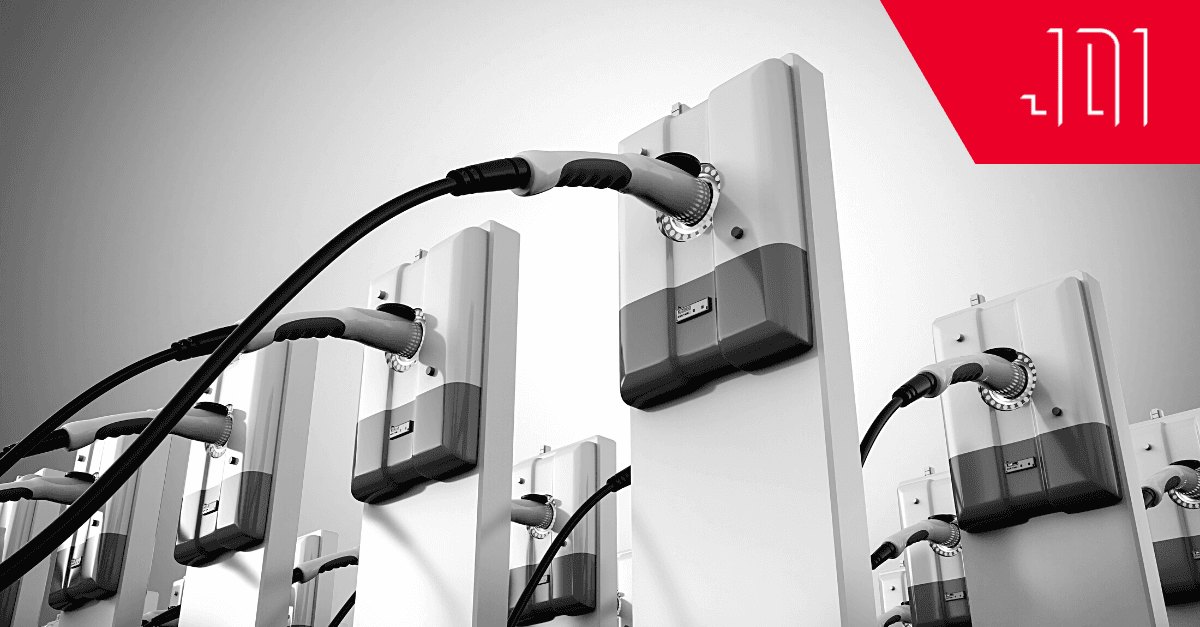EVs in America
Despite the fact that over 350,000 Teslas were recalled this month, EV’s (electric vehicles) are quietly taking over American streets. There are about 280 million vehicles on the road in the United States, of which 1.7 million are electric. The number of electric vehicles sold per quarter saw rapid growth between 2020 and 2022, and around 800 thousand models were predicted to have sold in 2022 alone.
Securing lithium, cobalt and nickel are still top priorities for electric vehicle manufacturing and the Biden administration, but innovation waits for no one. EVs have lost their stigma of impracticality or even being a toy, and everyone from legacy luxury brands like Jaguar, BMW and Mercedes to more affordable brands like KIA, Toyota and Nissan are rolling EV’s off the line. So which will come first – the great wave of EV adoption? Or putting a charging station in every parking lot?
Electric Vehicle Adoption
Unsurprisingly, California is setting the gold standard for EVs following their 2022 mandate for all cars sold in the state to be zero emission vehicles (ZEV) by 2035. The rule goes into effect in 2026, with 35% of all vehicles sold to be electric, and scales to 100% of light-duty vehicles 9 years later. With just under 30 million vehicles in the state, this will be a massive undertaking. The rule, passed down by the California Air Resources Board (CARB) allows other states to follow suit or stay on with less stringent – and less ambitious – federal goals. The United States government is aiming for a more attainable 50% of new vehicles sold to be electric by 2030.
Whether other states jump on board with California’s rule or stay on the federal bandwagon is still up in the air. We can’t predict the future, but it seems plausible that car manufacturers can hit the goal for the number of cars required to hit either goal. The raging supply chain beast is beginning to calm: chips are more available, crucial elements are being secured and more resiliency is being built into all stages. JDI fully supports lower emissions and more electric cars, but what we find most interesting is somewhat buried: the adoption of standards at the state and federal levels.
Consumers are still focused on the efficiency of their vehicle, and how it impacts their wallet long-term. Much like the miles per gallon or kilometers per liter, consumers see lifetime savings when these rates break in their favor. Battery longevity is no different, and when drivers are comparing an electric vehicle battery to that of their mobile phone, it becomes a serious issue. However, California is requiring ZEVs to maintain 80% range for 10 years or 150,000 miles, have a medium range of 150 miles, and have fast charging capabilities. This sets the bar for all EVs sold in the US, regardless of which state they end up being sold in.
Notably, the standards we ultimately adopt will help to shape consumer sentiment, preferences and expectations as we all transition towards EV’s. They’ll also shape the consumer experience in ways that have far-reaching consequences. Charging standards and innovations alone could bring about transformative changes to the American landscape.
Electric Vehicle Charging
In an announcement on February 15, the Biden-Harris administration came out with new standards for EV charging technology. In the statement, they reiterated their commitment to building out a national network of 500,000 chargers built around the highway and interstate system. More importantly, there is the Federal Highway Administration’s National Electric Vehicle Infrastructure (NEVI) formula program, which are the foundational guidelines for publicly available EV charging infrastructure. The NEVI program details requirements for installation, operation and maintenance of an EV charging network, and requirements for interoperability and pricing. These standards take Americans one step closer to a more consistent EV charging experience.
Even with a $17.5 billion investment into a national network, there still are major challenges along the way to electric vehicles and a charging network. Rapid charging provides DC current at between 200-300kW (compared to a domestic AC plug at around 50kW), capable of mostly charging a vehicle in 20-30 minutes. The charging starts at high intensity and slowly scales downward as the battery gets closer to its maximum capacity. When a network of rapid chargers is in place, users will be able to skip from one to the next, getting the most efficient charging they can.
What about in our day-to-day lives – when we’re at home, or at our jobs and in our communities? Near-term, you might see a few more charging stations in the back of supermarket and box store parking lots, or in larger parking garages. But what happens when EVs begin to hit saturation? How will our parking lots change? Where will our favorite gas stations go, and what happens to the places where we used to grab a snack while we refilled the tank? Will our electrical grid be ready for the rapid scale in demand?
The EV future is closer than we realize, and there are a lot of questions to answer in the meantime. While these unsolved problems are daunting, we’re also incredibly excited at what it means not just in emission reductions, but also in growing the American economy, and how it will reshape our streets and infrastructure.





